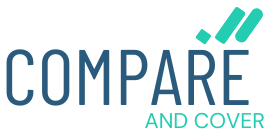Oops, Missed the Deadline
The federal open enrollment for Affordable Care Act (ACA) plans ran from November 1, 2024 to January 15, 2025, while select state exchanges offered extended windows (like California and New York, which went until January 31). If you’re reading this after mid-January 2025, don’t panic—you haven’t lost all your options yet.
❓ What Is Open Enrollment, and Why Does It Matter?
Open Enrollment is the once-a-year window—from November 1 to January 15—when you can sign up for a health insurance plan through the Affordable Care Act (ACA) Marketplace, renew your coverage, or switch plans.
If you missed the January 15, 2025 deadline, you generally won’t be able to get a new ACA plan unless you qualify for a Special Enrollment Period or are eligible for other coverage options.
So what now? Let’s go over your paths forward.

1. Special Enrollment Periods (SEPs) – Your Main Lifeline
Missing open enrollment isn’t the end of the road. You may still qualify for a 60-day Special Enrollment Period if you’ve experienced a qualifying life event—like:
-
Losing job-based coverage or aging off a parent’s plan
-
Marriage, divorce, birth, adoption
-
Moving to a new zip code or state
-
Gaining citizenship or legal residency
-
Being released from jail
-
Major income change affecting subsidy eligibility
-
Natural disasters or FEMA-declared emergencies
If you’re eligible, you can shop for the same ACA plans—Bronze, Silver, Gold—just like during open enrollment.
Quick tip: Save documentation—like a letter from your employer or updated lease—because proof is often required .
2. Medicaid & CHIP – Year-Round Safety Nets
If you’re eligible based on income or family circumstances, Medicaid and CHIP are available all year long—no deadlines. Keep an eye on your income, especially if it fluctuates—gaining or losing eligibility triggers open doors for enrollment.
3. Short-Term & Supplemental Coverage – Temporary Fixes
If you don’t qualify for SEP or targeted programs, consider:
-
Short-term health plans: Available nearly year-round in many states. However, they often exclude pre-existing conditions and don’t comply with ACA rules (no subsidies, limited coverage).
-
Supplemental plans: Dental, vision, accident, or critical illness policies can be purchased any time through private insurers or MetLife-style workplace voluntary offerings.
These can provide limited coverage until open enrollment rolls around—but they’re not substitutes for full ACA insurance.
4. Health Sharing and Direct Primary Care (DPC)
Another option to stay protected outside ACA windows: health sharing programs—community-based models (often faith-affiliated) where members pool money to cover each other’s medical bills. You can:
-
Enroll anytime
-
Possibly pay lower monthly amounts than ACA plans without subsidies
-
Choose providers freely
Pros: Year-round access, cost savings for healthy individuals, provider flexibility.
Cons: Often exclude pre-existing conditions, have waiting periods, and can’t offer ACA subsidies—so they’re not a full replacement.
Direct Primary Care (DPC) is another approach—paying a membership fee for primary care access, but it doesn’t cover emergencies or prescriptions.
5. Why Coverage Still Matters
Skipping insurance may be risky. Without coverage, even a routine ER visit or a broken bone could lead to tens of thousands of dollars in bills . Even short-term solutions can give you peace of mind while waiting for open enrollment.
6. 2025 Policy Shock: New Federal Rules Are on the Way
Heads up—major ACA changes announced in June 2025 could take effect soon:
-
Enrollment windows shortened
-
A $5 monthly fee for some re-enrollments
-
Stricter income verification for subsidies
-
Removal of transgender health from mandatory coverage
These changes might affect nearly 2 million Americans, making it even more important to act quickly if you’re eligible for SEP .
7. Step-by-Step Guide if You Missed Open Enrollment
Step 1: Check SEP Eligibility
Visit HealthCare.gov, your state exchange site, or a navigator to screen for a qualifying life event.
Step 2: Gather Proof
Documentation—like job loss letters, birth certificates, lease records—will be needed to apply during SEP.
Step 3: Shop ACA Plans
Use federal or state exchanges to compare plans, see if you qualify for premium tax credits or cost-sharing reductions (available during SEP too).
Step 4: Consider Temporary Coverage
If SEP doesn’t apply, look into short-term health plans or health sharing until November. Just be aware of the limits.
Step 5: Re-evaluate in Fall
Open enrollment returns November 1, 2025 to January 15, 2026 (some states slightly differ). Work with a broker or navigator to secure the best plan then.
8. Real-Life Stories
Case: Alex
Lost job-based coverage in March, qualified for SEP. Found a Silver plan with subsidies—monthly premium dropped from $450 (off-market) to $120 via exchange.
Case: Maria
Turned 26 mid-year and aged off dad’s plan. Using SEP, she chose a Bronze plan until she earned more and requalified for a Silver plan during open enrollment.
Case: Greg
No SEP qualification. Instead, he enrolled in a short-term plan for six months. Although cheaper at $200/month, he stayed aware of coverage gaps and switched to ACA plan in November.
9. Tips to Maximize Your Coverage
-
Check SEP first—it’s the most robust option.
-
Compare subsidies—even during SEP, ACA credits apply.
-
Watch for state-specific rules—exchanges like Covered California or Massachusetts may operate differently .
-
Review your eligibility every few months, especially for Medicaid or CHIP.
-
Keep documentation neat—makes SEP filing smoother.
-
Plan for Nov 2025—mark your calendar early to avoid missing next year’s window.
10. Myths vs Reality
| Myth | Reality |
|---|---|
| “Once you miss open enrollment, you’re stuck until next year.” | False: SEP, Medicaid/CHIP, short-term options exist. |
| “Short-term plans are just as good as ACA.” | No—they skip essential benefits, cost more out‑of‑pocket, and offer no protections for pre-existing conditions. |
| “Health sharing is insurance.” | It’s not—members share costs voluntarily; it’s not ACA‑compliant and carries financial risk. |
| “Subsidies only apply during open enrollment.” | Untrue—if you qualify under SEP or Medicaid/CHIP, subsidies and credits still apply. |

🚫 What NOT to Do If You Missed Open Enrollment
Let’s talk about the mistakes to avoid if you’re uninsured right now:
❌ Don’t assume you’re stuck until next year
Too many people assume that missing Open Enrollment means they have no options. As we’ve just covered, there are several paths to coverage based on your situation.
❌ Don’t go without insurance
Even a minor medical emergency can lead to thousands in medical bills if you’re uninsured. Try to get some form of coverage—even short-term—rather than going completely without.
❌ Be cautious of unlicensed plans or scams
Watch out for “health sharing ministries,” discount medical cards, or plans that sound too good to be true. These are not real insurance, and many don’t guarantee payment for your medical bills.
If you’re ever unsure, look for ACA-compliant plans or speak with a licensed insurance broker or Marketplace navigator.
🧭 Final Thoughts: You Still Have Health Insurance Options in 2025
Missing the 2025 open enrollment isn’t game over. By understanding Special Enrollment Periods, state-specific programs, temporary coverage alternatives, and the policy changes coming in the fall, you can still secure quality health coverage.
Take action today:
-
Check SEP eligibility
-
Look into Medicaid/CHIP
-
Consider short-term or health sharing backup
-
Gear up for next November
Your health—and your finances—are too important to leave uncovered. Whether you’re single, married, self-employed, or aging off a plan, there’s always a path forward: you just have to know where to look.
Here’s a quick recap:
| Situation | Possible Coverage Option |
|---|---|
| Lost job or insurance | SEP, COBRA, Short-term |
| Low income | Medicaid or CHIP |
| Recent life change | SEP (marriage, baby, move, etc.) |
| Young adult | Parent’s plan (if under 26) |
| Temporarily uninsured | Short-term coverage |
Take the time to explore your options, compare coverage and costs, and don’t wait until next year if you can help it. There’s still time to get affordable, legal health insurance that fits your life and your budget.
📣 Need Help Picking the Right Plan?
Navigating health insurance can be confusing—but you don’t have to do it alone. A Marketplace navigator, licensed insurance agent, or even your state’s health department can help you:
-
Understand your eligibility
-
Compare plans
-
Apply for coverage
-
Get financial help
Many of these services are free, and they’ll help you avoid costly mistakes.
Your health—and your finances—are worth protecting. Just because Open Enrollment has ended doesn’t mean your options have.
Note: This is educational content. For advice tailored to your situation, consult a certified navigator or insurance broker.





